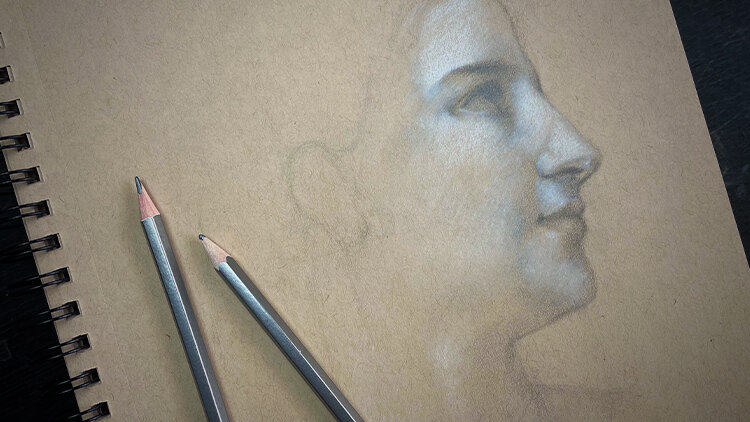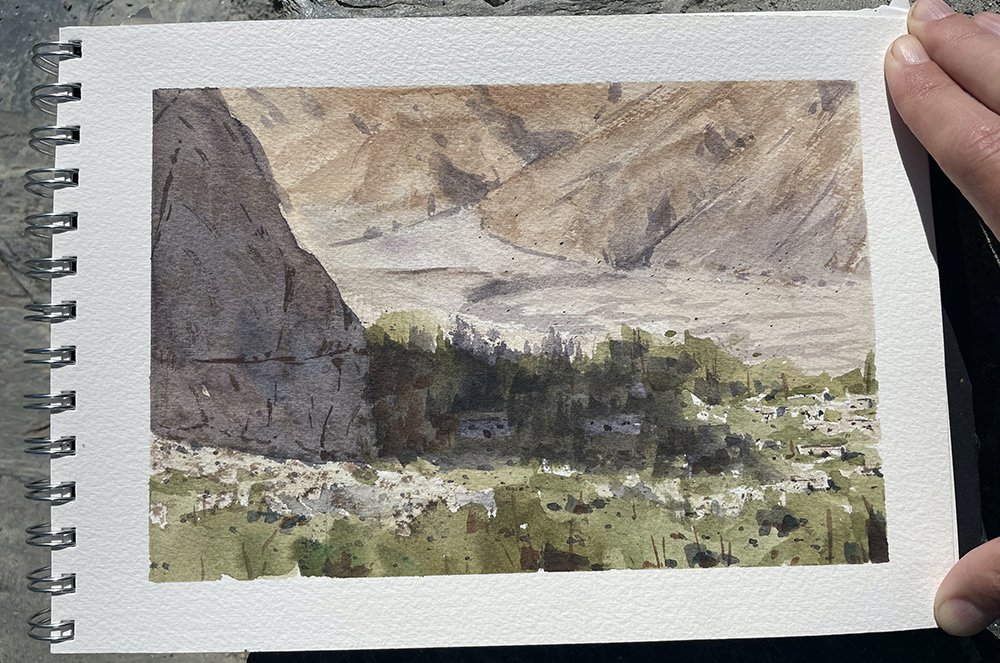5 Things I Learned from One Year of Watercolor Painting
Watercolors are one of the most challenging painting mediums out there - Unforgiving and mysterious. Feared by many, including myself. Then one day I finally decided to take them more seriously and try to harness their powers. It all started a year ago.
I was preparing for a trip to Alaska in May 2018. I had dabbled with watercolors years before getting into oil painting but that was almost 9 years ago now, so I can’t say any of the knowledge really stuck with me.
How Did I Get Into Watercolors?
The reason I decided to start doing watercolors and bring them with me to Alaska as my main plein air setup was due to the fact that it was light-weight and compact and I wouldn’t have to worry about bringing any tubes of paint through the airport. I had also been inspired by some of the Sargent books I had been reading at the time and seeing all of his watercolors, and I also got some inspiration for my compact setup from another artist I watch on YouTube named Marco Bucci. His videos on watercolor travel sketching really opened my eyes to the possibility of documenting my experiences more easily and without all the hassle of oil painting gear.
So after tweaking a few things to make the setup fit my needs, I tested it out for a week or two before my trip and luckily found it easy to work with.
The real challenge was creating a painting or capturing an experience that I was happy with. I wouldn’t get that satisfied feeling until a few months later, when most would’ve quit or given up by then, but I was committed to sticking with it and seeing how far I could take them.
I went to Alaska that May and did 7 crappy sketches. These were my first ever plein air sketches so I couldn’t really expect to be great right out the gate. But I was happy that I did them and I can look back at them to remember a bit of my trip, whether they are good or bad - doesn’t really matter to me. It’s more about the feeling and the memory.
What Did I Learn?
Once summer hit, I started going out more around my town and vlogging my experiences. I was gearing up to go on a trip to England and Paris. This is when I realized that:
1. Temperature Matters
When I would go out and paint early in the morning - each layer took much longer to dry compared to painting in the afternoon when it was sunny and hot. I noticed this difference became much more apparent as the the year went on and I visited much colder places - or painted at different times of the day.
While in Europe, I started to see more consistent, higher quality sketches in my work. There were some duds along the way but overall, I was actually excited and happy for once about the subjects I was painting.
I became a lot more confident in my watercolor abilities during this trip. I was finally using a higher quality paper and brand of paint, and it definitely helped to be in a different part of the world I’ve never been to and to see so many interesting subjects worth painting. This is when I learned:
2. The Importance of Sketchbooks
Being able to document where I’m at, what I’m seeing and the things I care about is so valuable. I can look back on these travel sketchbooks and remember exactly where I was, how it felt outside and what I was feeling. I’m also starting to see trends in my sketches over time - like repeating color schemes and subject matter and its teaching me things about myself that I never consciously thought about.
Once I got back home, I stuck with the habit of going outside and painting whenever I could, and documented my journey, all through Autumn and into the beginning of winter. This is when I saw the peak of quality in my work finally.
And then I began to experiment. I tried a different sketchbook, a different kind of paper and right away my quality went down again. This the moment I realized:
3. Materials Matter
And for me, the paper especially mattered. It’s like I had to relearn everything. This paper reacted way more differently than what I was used to. Eventually I kinda got the hang of it, but I basically soldiered through the sketchbook and went back to the paper I really enjoyed.
And it’s these kinds of experiences that I think help me grow more as an artist and push me to try new things. Who knows, I might’ve liked that new paper even better. Turns out I didn’t, but I wouldn’t know unless I actually tried it out. And I’m glad I did.
And while working through that sketchbook, I realized that it’s good to:
4. Embrace the Mistakes and Failures
Because they’re actually valuable lessons. I take what I can learn from them and move on to the next one. I don’t really waste time putting myself down or being negative about my paintings - instead I try to focus on the positive aspects of what I learned from it and apply it to future work, simple as that. No need to overthink it.
Eventually the weather got colder and I had a feeling my days were limited with watercolors - but it all depended on the weather really. I painted a little bit in December when I could and then it started raining - a lot. All through January, February, March, and even into April, it was just too cold and rainy to get out and do any painting, so unfortunately I stayed inside and painted with oils during those months. And to be honest, I kinda regret it. I could’ve at least painted something from my car or figured something out, but too late now so it is what it is. Just another learning experience for me - the hard way.
But through the whole last year, the last thing I learned is that:
5. Practice and Persistence Pays Off
I mean, here I am a year later with some amazing experiences and sketchbooks full of sketches to look back on, and my skills have improved - or so I think so at least - time will tell.
I’ve only scratched the surface of using watercolors. I’ve been working with small sketches up to this point and I think this next year will be full of experimenting with larger sizes and different subjects.
This just goes to show that if you 1. Pay attention to your surroundings, 2. Get to know your materials, 3. Understand the value of what you’re doing, 4. Practice and be persistent, 5. Be patient and learn from your failures, you can most likely create some great things and continue to develop your skills and grow as an artist. And that’s exactly what I’m trying to do with my Plein Air Adventure series on YouTube.
Be sure to leave me a comment or share it if you found it helpful!

I am an artist, writer, and instructor. As a previous graphic designer for a healthcare management business, I now teach drawing, painting, and discovering your passion with art.
When You’re Ready, Here’s How I Can Help You:

Unlock your artistic potential and learn to draw with confidence using the Intuitive Drawing method. From your first sketch to creating realistic drawings and subjects.



















